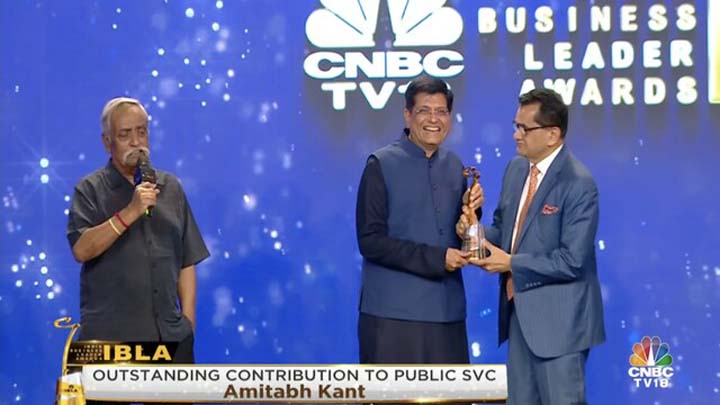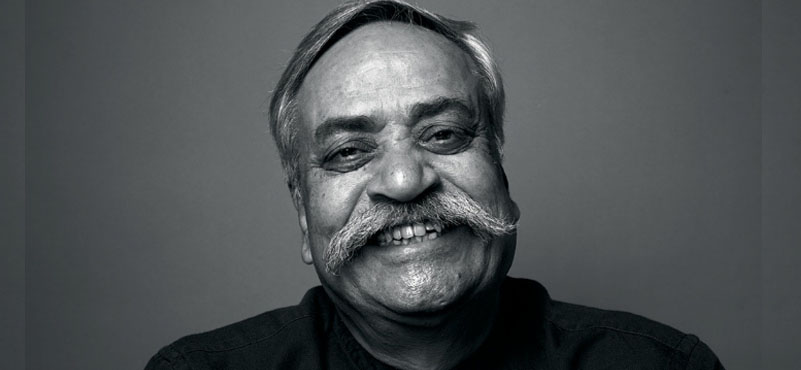When you think of Indian advertising, one unmistakable moustache comes firmly to the fore of the imagination. To call Piyush Pandey merely an adman would be doing him a great disservice. He was a storyteller, cricketer, humourist, and above all, a man deeply in love with India.
I first met Piyush in St. Stephen’s College. He was a lively cricketer—a batsman-wicketkeeper at the Ranji Trophy level for Rajasthan; but even off the field, his game sense never left him. He could read people and moments with uncanny precision. He had a gift for humour and connection that drew people to him naturally. While I was more focused on academics, Piyush balanced sport, friendship, and his academics with a remarkable ease – nothing ever felt make‑or‑break with him. He carried the world lightly, and in that gap, there always air in his days, room to breathe, to look around, to stay curious. He made time to sit with ideas, to tease out the less obvious, to laugh at what others took too seriously. He was naturally intelligent, scoring a first division even in his BA pass degree, which took him onwards to a masters in History. He understood, even then, that stories – how they are told, and who tells them – shapes our understanding of the world we live in.

After college, he followed his friend Arun Lal to the world of tea in Assam. But that quiet, mono-cultural life wasn’t for him. “I realised the tea business wasn’t my cup of tea,” he would later say with his characteristic wit. He knew he was built for people and not plantations. He soon left and returned to Delhi, joining Ogilvy & Mather (O&M) at the lowest level. From there, by instinct and intellect alone, he went on to become the agency’s global Chief Creative Officer, inspiring one of the greatest rises in Indian creative history.
When Piyush began in the 1980s, Indian advertising still looked Westward. The Indian imagination suffered from an immense colonial hangover. Ad professionals rarely challenged their target demographics, and were stuck in the outdated belief that fair faces and British accents signalled ‘a better life.’ Piyush changed all that. He made India speak in its own language again. He made our dialects, our values, and our aesthetic sensibilities both marketable and a matter of immense pride. We felt cool in our own eyes. We laughed at our idiosyncrasies, and we saw, for the first time, people like us, with dreams like our own.
- Fevicol: from a truck overloaded with people to an unbreakable egg — turned a simple adhesive into a national metaphor for unity and strength. As recent tributes noted, Fevicol became “more than glue. It was how India held together”.
- Cadbury Dairy Milk: The “Kuch Khaas Hai” campaign, he brought joy and innocence back into advertising. A young woman dancing onto a cricket pitch to celebrate her boyfriend’s victory was less about chocolate and more about celebrating freedom, confidence, and new India’s optimism. That ad changed how Indians saw chocolate. It transformed from being a Western indulgence (packed in the suitcases of relatives returning from Videsh), to an accessible Indian ritual of celebration.
- Asian Paints: “Har Ghar Kuch Kehta Hai” – The idea reframed paint as an emotion. Homes, he said, tell stories. Their walls hold memories. The campaign’s warmth was so timeless that the company revived it two decades later, proof of how deeply Piyush understood the Indian heart.
- Pulse Polio: Nothing captures his impact more powerfully than the Pulse Polio campaign — “Do Boond Zindagi Ke” — with Amitabh Bachchan. It changed public health behaviour in real terms. The campaign helped bring India’s polio cases from 60% of global incidence in the 1990s to zero by 2014, directly influencing millions of families to vaccinate their children. As public health experts later noted, it even became the communication model for India’s COVID vaccination drives years later.

His brilliance wasn’t only commercial. When Gujarat sought to brand itself for tourism, Piyush, and his creative partner Shoojit Sircar, conceptualised “Khushboo Gujarat Ki,” voiced by Amitabh Bachchan. It changed how Indians saw domestic travel, inviting people to rediscover a state through its warmth, colour, and history. The idea worked. Tourist arrivals in Gujarat rose by over 50% in just two years, and the campaign went on to win multiple National Tourism Awards for branding and image enhancement.
He even shaped India’s political language with the slogan “Abki Baar, Modi Sarkar,” which turned into one of the most successful political catchphrases of modern India.
Every campaign he touched carried his signature clarity of thought, humour rooted in drama, and a humane Indian feel. Whether he was selling glue, chocolate, paint, tourism, or public health, his approach never changed. He understood ordinary lives and treated them with respect. His work never looked down on people or their choices; it spoke to them as equals. He sold emotion rather than aspiration; and with that, he built lifelong trust.

Our paths crossed again, years later, when I was leading the Incredible India campaign. Ogilvy was our creative partner. Piyush had a rare gift for inspiring people and giving them confidence. He saw promise in others and always shared credit generously. During Incredible India, he championed V. Sunil (then Creative Director at Ogilvy), encouraging him, backing his decisions, and giving him full credit for the campaign’s success. Later, under Piyush, Ogilvy India became the country’s leading creative agency for more than a decade, and many of those he mentored now head agencies across the world.
Together, the Incredible India team shared a vision to portray India not through clichés of cow, curry, or colour, but through confidence in our diverse cultures. We wanted to make the world see the wonder that we Indians often overlook every day. The campaign was born out of the conviction that India’s brand must come from the heart.
Piyush taught me the value of simplicity in storytelling, what he called the KISS principle: “Keep it simple and stupid.” He had an uncanny ability to remove the noise around an idea until only a singular message remained. As a policymaker and branding strategist, he influenced me deeply. Whether it was Incredible India, Gujarat Tourism’s Khushboo Gujarat Ki, or Madhya Pradesh’s Hindustan Ka Dil Jeeto, we shared the belief that the best brands are built on authenticity.
We often joked that I built the campaigns from the government’s side, and he gave them a soul. It was true, Piyush knew exactly how to balance instinct with insight. While I worked through the paperwork of policy and positioning, Piyush would bring in sparks of humanity: the way a child smiled, a hand waved, a song played in the background. In each campaign we created together, he reminded me that data can drive reach, but emotion drives recall.
Even when global recognition came—he won the Padma Shri, Cannes Lions Jury Presidency, Clio Lifetime Achievement Award, he stayed firmly anchored in India. As he rose the ranks at Ogilvy, he was encouraged to move to New York, but chose to remain here, believing his creative current flowed from Indian soil. That decision defines him more than any accolade. He was always unapologetically local, and yet, magnificently universal.
Piyush Pandey showed us that you don’t have to imitate the world to inspire it. His life was proof that creativity, when born of authenticity, can unite a country, change its language, and even alter its destiny. To me, he will always remain that smiling Stephanian; bat in hand, spark in eyes; who made India laugh, think, and feel again.
* The author was India’s G20 Sherpa and is the former CEO of NITI Aayog. Views expressed are personal.








